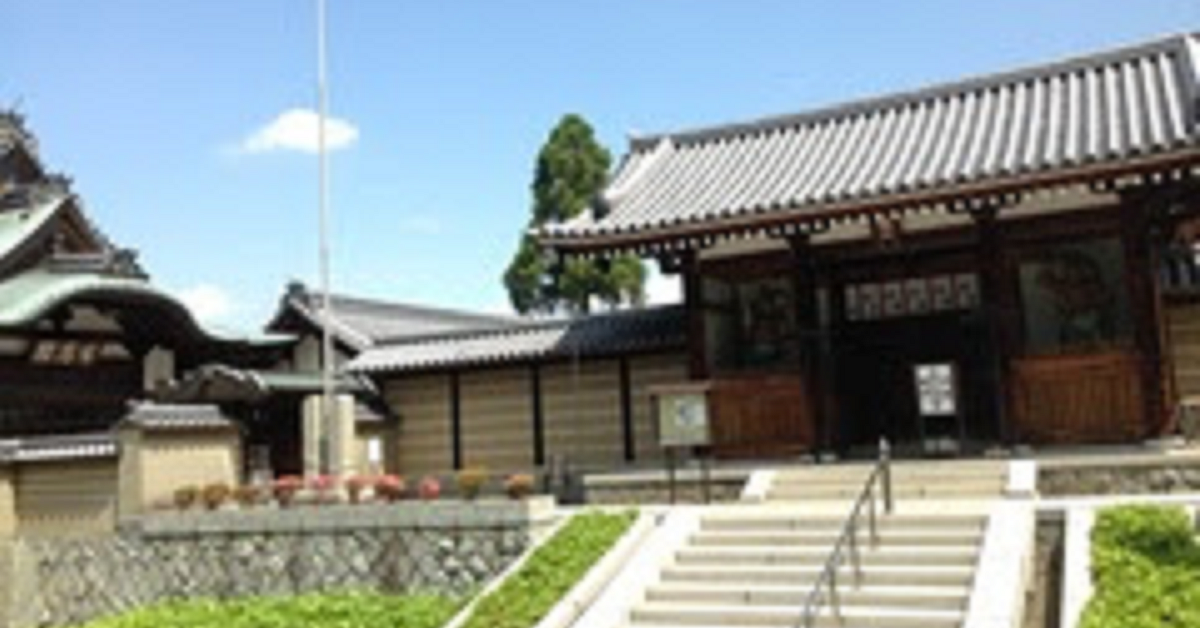One of the most emotionally striking scenes in the movie KOKUHO is when the protagonist, Kikuo, visits his family’s grave. Set at Ojo-in Rokumanji Temple in Osaka, this sacred place symbolizes life, family bonds, and forgiveness through its tranquil beauty. This article explores how this real-world temple intertwines with the heart of the film’s message.
About Ojo-in Rokumanji Temple
Ojo-in Rokumanji Temple, founded during the Nara period by the Buddhist monk Gyoki, is an ancient temple belonging to the Shingon sect. Nestled quietly in the hills of Osaka, it has long been a place where people come to pray and find peace. Within its grounds stand ancient pagodas and stone Buddhas, testifying to centuries of faith and time’s passage. In spring, cherry blossoms fill the air; in autumn, the temple glows with brilliant red leaves.
The temple is known as “the origin of memorial prayer,” a place where visitors can reflect on life and the past while honoring those who have passed away. In KOKUHO, the temple’s atmosphere of silence, purity, and compassion mirrors the inner transformation of the characters, blending perfectly with the movie’s emotional tone.
The Meaning Behind Kikuo’s Grave Scene
The grave-visiting scene, in which Kikuo stands before his ancestors with his family, is a turning point in the film—a moment of spiritual rebirth. As Kikuo prays in silence, he confronts his inner conflicts, reflecting on his father, his family, and his own life’s journey.
There are almost no spoken lines; instead, silence becomes the language of emotion. The sound of the wind, the rustling of trees, and the distant ringing of a bell subtly express the characters’ inner worlds. The director once stated, “Truth exists within silence,” allowing the audience to feel emotion rather than hear it.
| Scene Element | Cinematic Feature | Emotional Effect |
|---|---|---|
| Kikuo’s prayer gesture | Slow, deliberate camera movement | Serenity and acceptance |
| Family positioning | Symmetrical composition | Rebirth of familial unity |
| Background nature | Contrast of light and shadow | Dialogue between life and death |
| Sound direction | Bells, wind, distant birds | The wordless prayer of the soul |
This scene’s brilliance lies in its unspoken storytelling. The audience is invited to share the same spiritual space as the characters, making it a deeply personal cinematic experience.
The Connection Between KOKUHO and Ojo-in Rokumanji
| Element | Description |
|---|---|
| Filming Location | Ojo-in Rokumanji Temple, Higashi-Osaka |
| Main Characters | Kikuo, his wife, and son |
| Symbolism | Family, life, forgiveness, rebirth |
| Cinematic Approach | Use of natural light and silence |
| Narrative Purpose | Portraying emotional healing and reconciliation |
The director chose this temple because it represents “a harmony between human life and nature.” Rokumanji is a place where time feels suspended—where the boundaries between past and present, life and death, blur.
During filming, even the angle of sunlight and echoes of sound were carefully adjusted. The light falling behind Kikuo symbolizes forgiveness from the past, while the calm atmosphere of the temple represents spiritual renewal. Each element works in harmony to visualize the film’s central message.
The Beauty and Highlights of Ojo-in Rokumanji
Beyond its cinematic fame, Ojo-in Rokumanji offers profound historical and cultural value.
| Highlight | Feature | Atmosphere |
|---|---|---|
| Main Hall | Fragrant wooden architecture | Calmness and reverence |
| Tahoto Pagoda | Preserved Heian-style structure | Historical weight and sanctity |
| Stone Steps & Path | Featured in the film | A bridge between past and present |
| Seasonal Scenery | Cherry blossoms, maple leaves, snow | The cycle of life and time |
The stone stairway, featured prominently in the movie, allows visitors to literally walk the same path as Kikuo, reliving the emotional depth of the scene.
Each season transforms the temple—cherry blossoms in spring, lush greenery in summer, crimson leaves in autumn, and snow in winter—making every visit a new spiritual experience. Ojo-in Rokumanji is not merely a sightseeing spot; it is a sanctuary for the soul, reminding us of the quiet strength found in stillness.
The Growing Pilgrimage Among Fans
Since KOKUHO’s release, Ojo-in Rokumanji has become a “spiritual pilgrimage site” for movie fans. Many visit to relive the film’s atmosphere—some photographing the exact scenes, others standing quietly to pray, just as Kikuo did.
| Aspect of Pilgrimage | Fan Activity | Deeper Meaning |
|---|---|---|
| Scene Recreation | Praying and photographing key spots | Connecting fiction with reality |
| Visitor Impressions | “I felt my heart cleansed by the silence.” | Experiencing emotion beyond the screen |
| Local Involvement | Support from the temple and local shops | Revitalizing regional culture and tourism |
This type of pilgrimage is not simple tourism—it’s an act of respect and empathy toward the film’s message. Through visiting, people engage directly with the film’s themes of prayer, forgiveness, and the continuity of life.
Conclusion
The grave-visiting scene in KOKUHO stands as a symbol of love, forgiveness, and renewal. The timeless setting of Ojo-in Rokumanji Temple, with its rich history and natural harmony, amplifies the emotional power of the story.
Visiting the temple allows one to go beyond cinema—to truly feel the preciousness of life, the strength of human connection, and the peace of spiritual reflection. Within its quiet grounds, prayer becomes more than a ritual—it becomes the essence of life itself.






